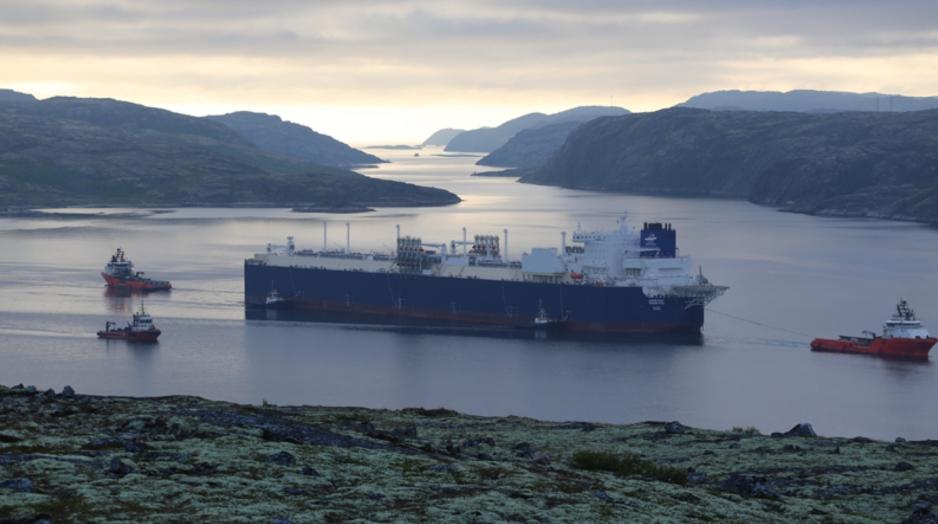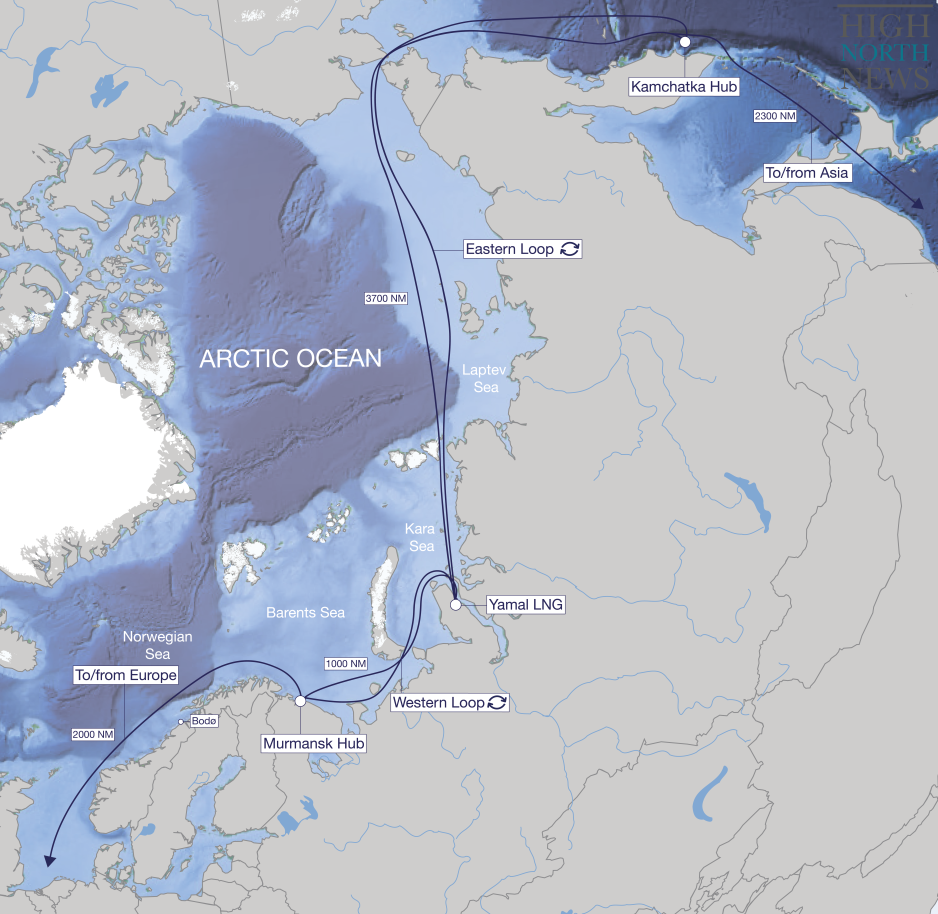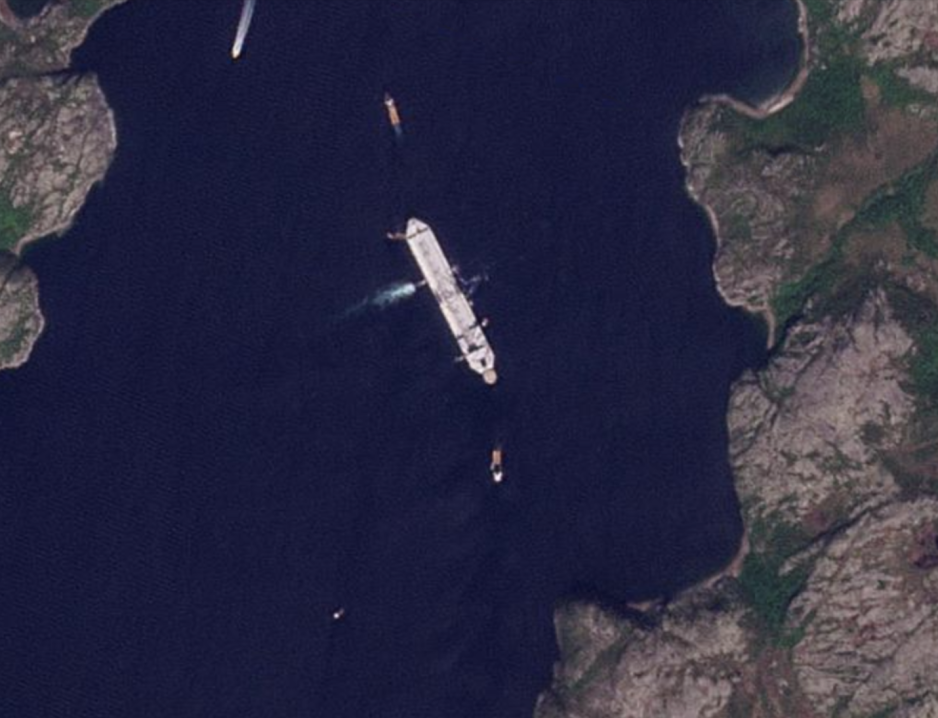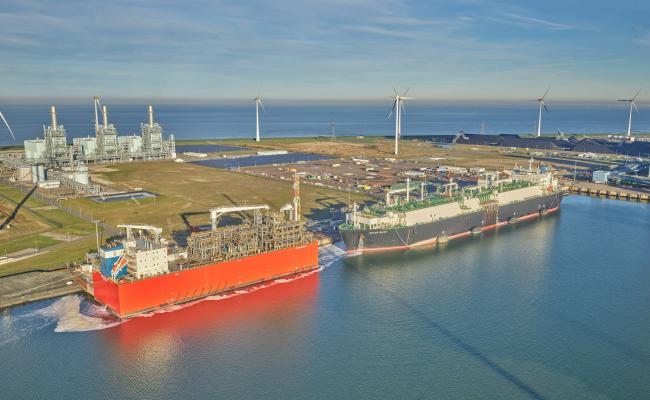New LNG Storage Hub Set to Accelerate Flow of Russian Gas to Europe

Saam FSU being towed into place in Ura Guba. (Source: Rosmorport)
A new transfer point for liquefied natural gas in waters adjacent to the Barents Sea will further expedite the delivery of Russian gas to Europe. The hub arrived this week after a 12,000 nautical mile journey from South Korea and will begin operations this summer.
Novatek’s first floating transfer hub for liquefied natural gas (LNG), Saam FSU, has arrived in the narrow inlet of Ura Guba in the Russian Arctic after a four-months journey under tow from Okpo, South Korea. The barge will optimize the export of Russian LNG to Europe. The company ordered the $748m barge three years ago from South Korean shipyard DSME.
A second barge, Koryak FSU, will take up position off the coast of Kamchatka in the Far East later this year. The barges are more than twice the size of the large Arc7 LNG tankers, allowing it to temporarily store the LNG before it is reloaded onto non-ice capable gas carriers.
The goal of this logistics network is to shorten the distance that specialized ice-capable LNG carriers need to travel. Instead of delivering their cargo all the way to Europe or Asia, the vessels will now be able to turn around just outside ice-covered waters near Murmansk and Kamchatka.
This process allows for significant time savings. Currently Arc7 carriers have to travel between 2,500-3,200 nautical miles from Sabetta to ports in Europe – a voyage that takes around 16-24 days roundtrip. With the FSU in place the distance is shortened to around 1000 miles, taking just 6 days round trip.
Once the second FSU is in place the company will be able to realize similar efficiencies in an easterly direction. Voyages from the Yamal LNG plant to Asia currently take around 5-6 weeks round trip along 6,000 miles. The distance will be cut to around 3,700 miles taking approximately 3 weeks.

Map showing location of the transshipment hubs and shipping routes to Europe and Asia. (Source: Author’s own work)
Hubs are key to Novatek’s operation
Each barge has an annual transshipment capacity of 20m tons, sufficient to handle production from both Yamal LNG and the upcoming Arctic LNG 2 project.
The hubs also alleviate pressure on Russia’s Zvezda shipyard to deliver additional Arc7 carriers. Transshipping the LNG effectively postpones the need for additional Arc7 carriers until Arctic LNG 2 becomes fully operational in 2026.
The barges employ DSME’s proprietary re-liquefaction technology which captures and re-liquefies gas that naturally evaporates during transfer and storage in the cargo hold.
The hubs are operated by Arctic Transshipment, a subsidiary of Russian gas producer Novatek. Even with most European companies exiting from energy projects in Russia, France’s TotalEnergies continues to hold a 10 percent stake in the subsidiary it secured in 2021, in addition to its stake in Novatek itself.
At the time TotalEnergie’s CEO Patrick Pouyanné explained that “these terminals mark an important step in the advancement and consolidation of the Arctic LNG 2 project, and will contribute to the safe and sustainable export of cargoes from our existing and developing Yamal projects.”

Satellite image of Saam FSU on Jun 28, 2023 being positioned by tugs. (Source: Google Earth)
For how long the European hub may be of use to Novatek remains to be seen. Questions continue to mount if the EU or individual member states could ban or phase out Russian LNG.
Discussions in Brussels on the matter remain ongoing and while some countries, such as the Netherlands, have begun to reduce their imports, experts think that a ban as a whole remains unlikely due to long-running offtake agreements by European importers.



